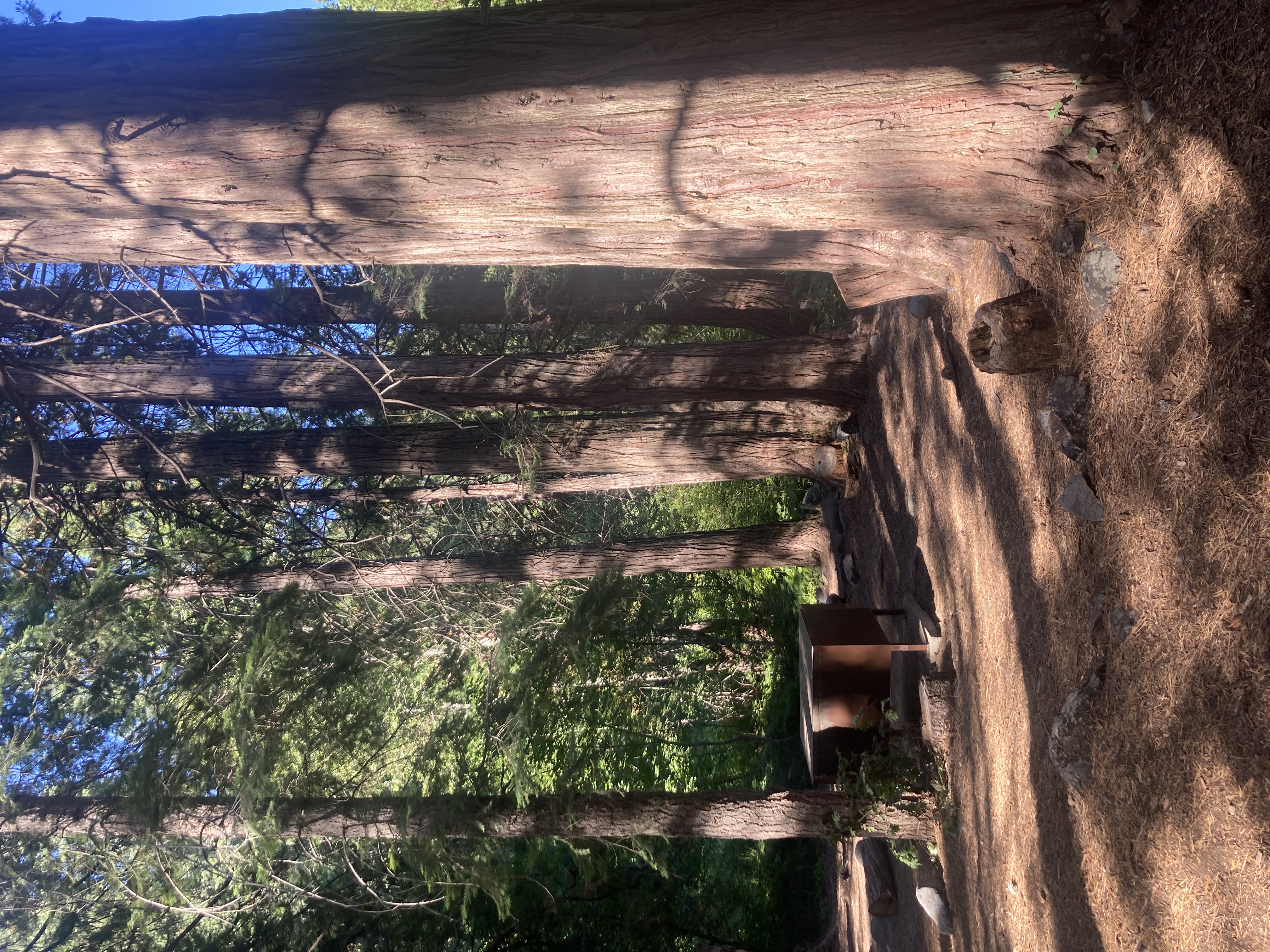Some Western Trees
Contact
University of Arkansas System Division of Agriculture
Cooperative Extension Service
2301 S. University Ave.
Little Rock, AR 72204

Some Western Trees
The horrific western wildfires shown on television the past few years give the impression the western states are ablaze and that all the trees are gone. Not so. Driving through the mountainous regions leaves me with an impression of the great abundance of trees that cover the mountainsides. Like the Ozarks and Ouachitas, these are mostly second-growth forests, but they are still enormous trees, often reaching heights of over 120 feet. Occasionally I encounter burned areas, and they are indeed sad blights on the landscape, but these encounters are infrequent and finite in size.

Let me tell you about three magnificent tree species I have encountered in various parts of the western states I’ve traveled to this season. There are lots of western conifers and it is sometimes a challenge to tell them apart driving down the highway but these three are a bit more distinctive. They are Douglas fir, Ponderosa pine and California incense cedar. All are evergreen conifers and big trees reaching heights of 150 feet or more and all are important in the forest industry.
Douglas fir is not a fir at all but a monotypic species of conifer that once ranged into other parts of the world. There are three subspecies of this forest giant; the Coastal form that ranges from coastal Washington to central California (and eastward to the western slopes of the Sierra Nevada Mountains), the Rocky Mountain subspecies that ranges from British Columbia, down the Rocky Mountains as far south as New Mexico, and the Mexican subspecies which occurs further south in the high mountains of that country.
This is the “Doug fir” of the lumber yard and the most important timber species in the United States, at least in terms of board feet cut and sold. Its wood is strong and it can be cut to specified beam lengths up to 60 feet long. In protected groves, you see enormous trees with 15-foot-wide trunks that reach 250 feet in the air. But because the tree is so fast-growing, the trees of the forest trade are more modest in size with 2- to three 3-foot-diameter trunks. It is now grown around the world as a forest tree and in New Zealand is considered an invasive species although it is the most important timber tree of that island nation.
I grew a Douglas fir in Fayetteville for about 20 years, but it didn’t survive the insult of the back-to-back drought and high heat years of 2011 and 2012. Seed sourced from the southern range of the Rocky Mountain subspecies should grow in Arkansas, but site selection would be important.
Ponderosa pine is but one of the many species of pines you encounter in the West, but I think it is the most impressive. It has five subspecies and occurs in sixteen western states, growing most often on high, drought-prone sites. Older trees are easy to recognize by the hand-sized orange bark plates, their stout trunks and tufted needles on the branches. The species is fire-tolerant so old trees have a very thick bark and the tufting of the stout needles around the buds protects them from moderately intense fires. Eighty percent of the trees in the Black Hills are ponderosa pines.
The wood of young ponderosa pines tends to warp so it has not been used as building lumber, instead finding a place as railroad ties. It has been planted around the world and is considered an escaped species in Australia and New Zealand. I’ve never grown this species in Arkansas but there is no reason it should not grow, though our native shortleaf pine would be a better choice. I know of one 75-year-old tree in Benton County.
I’ve seen the California incense cedar in Arizona and Oregon on previous trips west, but it was not until this year when I encountered the tree in California in the High Sierras that I understood what it was all about. I have known the species as a drought-tolerant arborvitae-like smallish tree suitable for screening, but my thinking changed when I saw the tree in its natural surroundings. It ranges from southern Oregon, through California in both the Coastal Range and the High Sierras with spillover spread into Nevada, Arizona and the Baja region of Mexico. It is another of the 60 or so species of monotypic conifers that once had a wider geographic range than that found today.
The needles of California incense cedar are arranged in flat hands like arborvitae that smell somewhat like shoe polish when crushed. In the wild, old trees develop long, furrowed grayish bark that resists fire. Trees may reach 150 feet with the first 60 feet clear of branches. The wood is lightweight, soft, aromatic and relatively knot free. When the pencil industry depleted the old-growth eastern red cedars in Arkansas, they moved west and this species became the dominant wood for pencil making. It is also used for siding and building cedar chests.
A lot of other western trees caught my eye but it’s hard for me to separate the firs and spruces while driving down the road. And you can never find a parking place when you need one.